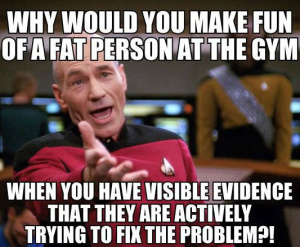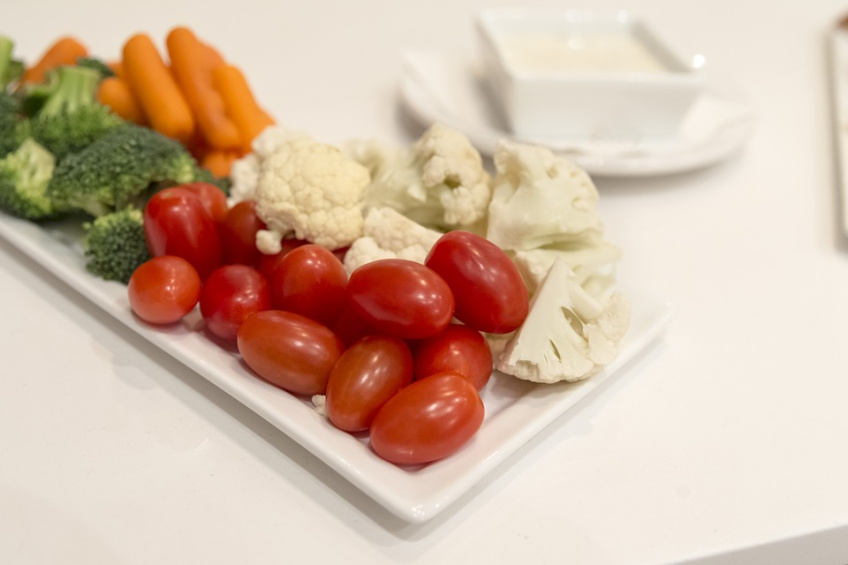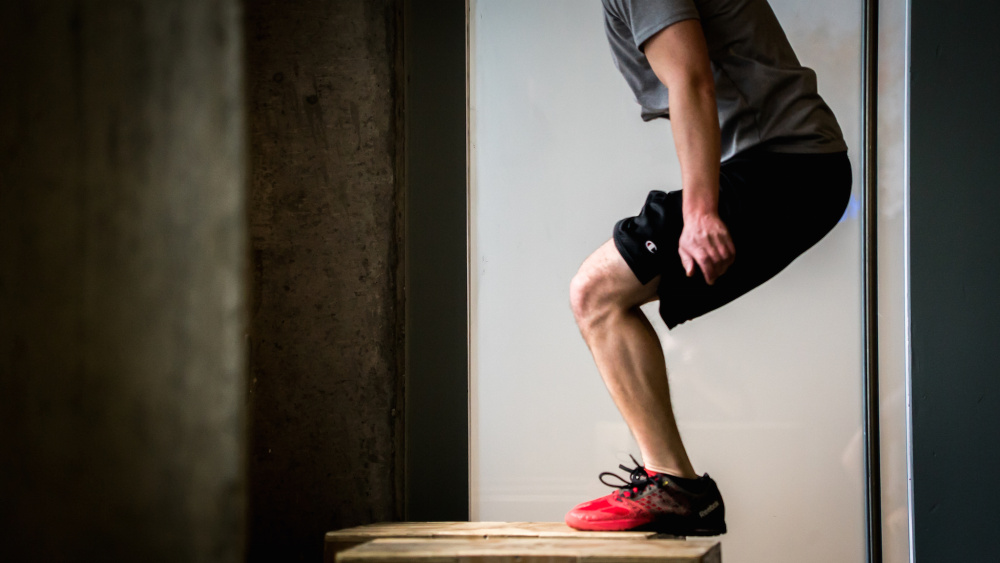Now that the Seattle gloom has finally settled in and made its presence felt, I thought it would be a good idea to have some fun and laugh a little with Flow Fitness’ 9 favorite gym memes (Top 10 is just too mainstream). The take-home message for many of these memes is to never be THAT person (unless it’s the Hulk … Always be the Hulk. Enjoy!
9. Resolutions Memes
Yup, it’s that time of year again where people’s top priority is to gain, lose, tone, chisel, bulk and tighten. Gym usage will soar to new heights, as lines for the treadmill will look like opening night for a Seahawks game. Many gym regulars use this time to take a break from the gym, as many can’t deal with the increased crowd of “newbies” trying to jumpstart their fitness routine. This frustration only lasts for a moment – within 30 days of reaching max capacity, the dust settles and things turn back to normal. New Year’s goals become a distant memory and, sadly, many resort back to their “regular” routine of inactivity. For those of you who are sufferers from the “resolution blues,” think about enlisting the services of a certified personal trainer who can hold you accountable, help you set up realistic goals and develop a custom program that fits you like a glove!
8. The Pre-Workout Meme
Pre-workouts are exactly what the name entails, something you take prior to your workout to enhance your performance. Most pre-workouts contain various amounts of caffeine that can range from one to four cups of coffee, carbohydrates (which serves as your primary fuel source while training) and, in some cases, branched-chain amino acids (which aid in muscle recovery and repair). This perfect storm of ingredients has left people feeling superhuman once it “kicks in,” which generally takes 20 to 30 minutes after consumption.
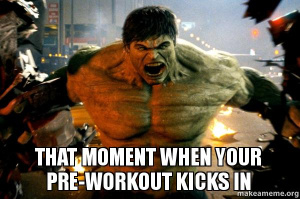
7. Protein Obsessed Meme
When it comes to post-workout nutrition, nothing beats good ol’ fashioned protein. This especially holds true for those trying to put on lean-muscle mass. When consuming protein, it is best to consume from lean sources, such as chicken, fish and very lean red meat (such as bison or filet mignon). It is recommended that you consume between 0.4 to 0.9 grams of protein per pound of body weight (depending on your activity levels and training goals). Eating your first-born is discouraged and illegal, so don’t do it.

6. Chicken Leg Meme
While lower-body mass (including glutes) should account for much of your total lean muscle mass, many people get consumed with the showcase muscles of the chest, arms, and abs and train their legs as an afterthought. This gym sin leaves the guilty party looking like an upside-down pyramid, as pencil-thin legs fight to keep their giant torso moving forward. As a rule of thumb, you should have 2 days dedicated to your lower body and stimulate it with heavy weights, compound movements (squats and deadlifts) and volume. The good news is that you are still jacked and intimidating, so most people will only laugh at you behind your back. Of importance: This looks just as ridiculous on women as it does for men.

5. The After-Leg Day Meme
Avid gym rats who don’t subscribe to meme No. 6 always appreciate a good leg workout. They also appreciate the pain, soreness, inability to sit on the toilet or the ability to do most tasks with any grace or beauty (this includes walking) for several days. Very rarely when we see somebody walking funny as they leave or enter the gym do we immediately show concern for a potential injury. We simply give them a nod and acknowledge that another leg day is in the books. Though we appreciate a grueling training session, it is important after any workout, to give the body at least 24 hours to recover and to avoid doing similar body parts on consecutive days. More is not always better; better is better!

4. The Swole-Mate Meme
Nothing is better than having a “mate” pressing, sprinting, grunting and sweating buckets right next to you during your workout. Bonus points are given if this person is your girlfriend, boyfriend, husband or wife. It serves as an amazing motivator and it holds you accountable for your success or failure. When looking for your perfect training partner, make sure you have similar goals and interest in the gym. If your potential partner’s definition of working out is 20 minutes on the recumbent bike while playing solitaire and yours is 10 500-meter rows for time, then I suggest you keep looking.

3. Curling in the Squat Rack
This meme needs no explanation. Don’t ever do it, and if you are thinking about it, erase it from your mind immediately! It’s just plain wrong!
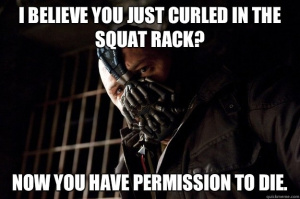
2. Messy Lifter Meme
This is a down-right mutual respect thing. Nothing is more frustrating for gym-goers than to come across misplaced gym equipment – or just a messy gym in general. It’s just like your mom used to say when you were a little kid, “Put things back where you found them.” Now come back to reality, realize that you are no longer a kid and that your mom will not be picking up after your workout.
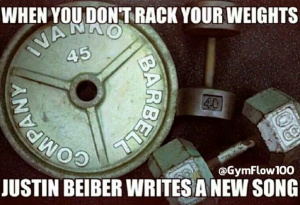
1. Judgemental Gym Goer
I’ll end on a rather serious note with this final meme, as this is the culture we are trying to rid the world of. There is no room for bullying, body-shaming (this includes the chicken-leg people) or criticism of anybody. This is especially true if they are taking the steps to improve themselves (in any way that makes him or her happy). The gym can be an extremely intimidating place for most people, and it is our job to welcome each person into the fitness community with open arms and with a willingness to help and support them during their journey. If you think you are better than somebody else because you have 6-pack abs or chiseled calves, you have missed a great opportunity to inspire and empower others to create the strongest version of themselves. Like Spiderman learned early on in his journey of superpowerdom: “With great power, comes great responsibility”. Use your powers for good and aggressively spread the enthusiasm you have about fitness to others. You never know whose life you may change.
